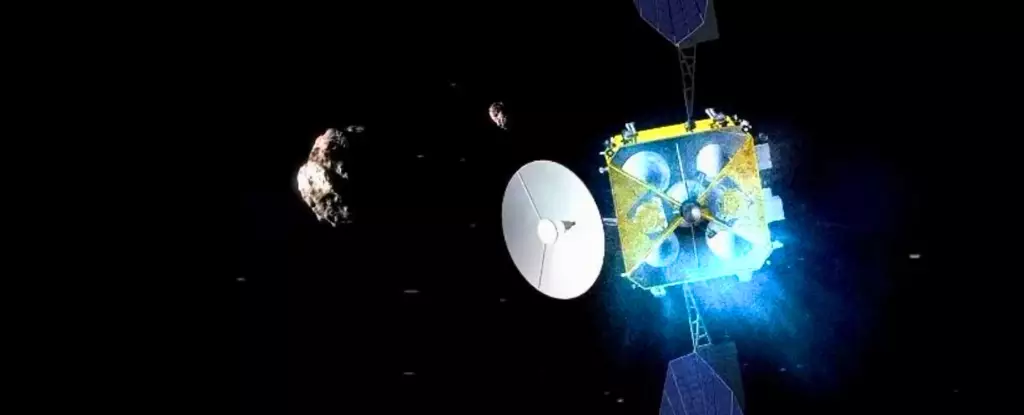On a groundbreaking Thursday, China took a significant step in its ambitious space agenda by launching the Tianwen-2 probe, marking its inaugural attempt to collect samples from an asteroid. As reported by the Xinhua State News Agency, this mission signifies more than a mere venture into the cosmos; it embodies years of investment and determination to realize President Xi Jinping’s vision of China as a formidable space power. The relentless pursuit of knowledge beyond our planet is now becoming a defining characteristic of China’s technological doctrine.
In recent years, China has channelled substantial resources into its space initiatives, striving to carve out its position among leading spacefaring nations. The Tianwen-2 mission represents just one facet of a multifaceted program that includes the construction of the Tiangong space station and plans for a crewed lunar mission within this decade. This strategic ambition emphasizes the country’s long-term vision to explore, research, and eventually inhabit celestial bodies beyond Earth.
The Launch: A Testament to Technological Prowess
The launch was executed flawlessly, with the Long March-3B rocket lifting off from the Xichang launch site in Sichuan province at 1:31 AM local time. Approximately 18 minutes later, the Tianwen-2 probe was successfully placed into a transfer orbit towards the asteroid 2016HO3. The quick deployment of its solar panels highlighted the technological sophistication that China has achieved in its aerospace endeavors, showcasing its capability to engage in complex space missions.
China’s success in deploying this probe into space is a point of pride, yet it also draws attention to the broader implications. As space exploration intensifies globally, the question of collaboration versus competition arises. While Beijing is clearly focused on ascending to new heights independently, the possibility of sharing discoveries with other nations could augment humanity’s collective understanding of the universe.
Unlocking the Secrets of the Solar System
The mission has ambitious objectives: Mr. Shan, a high-ranking official, expressed his hopes for significant discoveries that could transform our understanding of the cosmos. The near-Earth asteroid 2016HO3 is not just a target for sample collection; it acts as a “living fossil” with remnants of materials from the Solar System’s formation. By analyzing these samples, scientists can unlock clues to early planetary formation processes, potentially reframing the narrative of our cosmic existence.
Moreover, the Tianwen-2 mission will also explore the enigmatic comet 311P, which exhibits characteristics reminiscent of both asteroids and comets. This presents an exciting opportunity for researchers to study the composite nature of celestial bodies, informing theories regarding their origins and evolution.
A New Era in Space Exploration
As China looks to establish a permanent presence on the Moon and further its reach into the depths of space, it is clear that its ambitions extend well beyond immediate challenges. The Tianwen-2 probe serves as a beacon of hope and inspiration, not only for China but for humanity as a whole. The success of this mission could inspire a new generation of scientists and explorers, creating an atmosphere enriched by curiosity and discovery.
In a landscape where nations are vying for dominance in space, China’s initiatives signal an era of robust exploration and scientific inquiry. The Tianwen-2 mission is more than just a moment on a timeline; it represents the spirit of adventure and boundless possibilities awaiting us in the universe. The path ahead is fraught with uncertainty, but the commitment to exploring the depths of space assures us that our quest for knowledge will continue unabated.


Leave a Reply